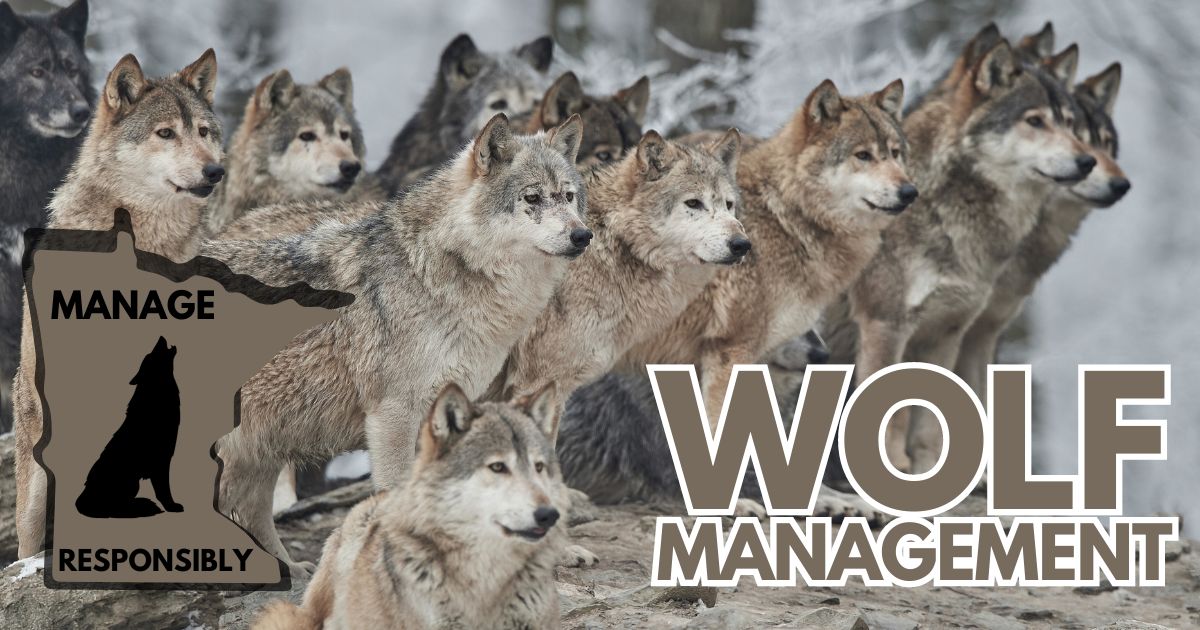

Wolves are a symbol of the wild, embodying the untamed spirit of nature. In Minnesota, the gray wolf represents this wilderness more than any other creature. However, the topic of wolf management is a contentious one, often sparking heated debates among hunters, conservationists, and residents alike. While opinions may vary, the science behind wolf management is clear. Responsible wolf management is essential for preserving Minnesota's natural heritage and supporting those who live closest to these animals.
Minnesota has a rich history with gray wolves. By the 1980s, the state had achieved its goals for wolf recovery, thanks to conservation efforts and favorable habitats. This success story is a testament to the resilience of the species and the effectiveness of well-planned recovery programs. The gray wolf population in Minnesota has since stabilized, meeting all recovery criteria set by wildlife experts.
While the recovery of the gray wolf is a reason for celebration, it also necessitates the need for management. Unchecked populations can lead to increased human-wolf conflicts, especially in areas where wolves and humans coexist closely. Effective management ensures that the wolf population remains healthy while minimizing negative interactions with humans.
The Minnesota Department of Natural Resources (DNR) plays a crucial role in managing the state's gray wolf population. With decades of experience and a deep understanding of local ecosystems, the DNR is well-equipped to implement science-based management strategies. These strategies are designed to balance the needs of wildlife with those of the human population, ensuring a harmonious coexistence.
Some wolf advocates argue for a hands-off approach, believing that wolves should be left entirely to their own devices. However, this stance can do more harm than good. Ignoring the need for management disregards the experiences of those who live closest to these animals and face the challenges of coexisting with them daily. This can lead to feelings of helplessness and frustration among residents, potentially fueling extreme viewpoints and illegal actions against wolves.
It's essential to consider the opinions of all stakeholders when discussing wolf management. Those who live and work in close proximity to wolf populations have valuable insights into the realities of coexistence. Ignoring their perspectives can lead to policies that are out of touch with the on-ground realities, exacerbating conflicts rather than resolving them.
Effective wolf management must be grounded in science. By following evidence-based practices, we can develop strategies that protect both wolves and human interests. This involves regular monitoring of wolf populations, understanding their impact on local ecosystems, and implementing measures to prevent conflicts before they arise.
Wolves thrive in various habitats across Minnesota. However, not all areas are suitable for unmanaged wolf populations. In regions where human-wolf interactions are frequent, management practices are essential to mitigate conflicts. In contrast, there are expanses of wilderness where wolves can live with minimal human interference, highlighting the need for a balanced approach.
Organizations like the Center for Biological Diversity advocate for the protection of wolves, often opposing management practices. While their intentions are noble, their actions can sometimes create a distorted image of the wolf as a perpetual victim. This portrayal can hinder constructive dialogue and collaboration among stakeholders, making it harder to develop effective management strategies.
Many hunters and outdoorsmen in Minnesota have a deep respect for the wolf as one of nature's most skilled predators. This respect often comes from firsthand experiences in the wild, something that non-hunters may not fully appreciate. By involving these individuals in management discussions, we can ensure that policies are informed by a diverse range of perspectives and experiences.
It's possible to protect and manage the gray wolf simultaneously. By implementing responsible management practices, we can ensure that wolf populations remain healthy while minimizing conflicts with humans. This balance is crucial for the long-term sustainability of both wolves and human communities.
Failing to manage wolf populations can have serious consequences. Increased human-wolf conflicts can lead to greater animosity towards wolves, potentially resulting in illegal killings and other harmful actions. By taking proactive steps to manage wolf populations, we can prevent these negative outcomes and foster a more positive relationship between humans and wolves.
The future of wolf management in Minnesota depends on our ability to balance scientific knowledge with the experiences and needs of local communities. By fostering collaboration among stakeholders, we can develop strategies that ensure the health of wolf populations while supporting the livelihoods of those who live closest to them.
Supporting responsible wolf management is crucial for preserving Minnesota's natural heritage. By advocating for science-based practices and considering the perspectives of all stakeholders, we can ensure that our state's gray wolf population continues to thrive in harmony with human communities.
Wolf management is a complex and often controversial topic, but it's one that requires thoughtful consideration and action. By supporting responsible management practices, we can protect the gray wolf while minimizing conflicts with humans and protecting deer hunting and livestock. This balanced approach will help ensure that these animals continue to be a vital part of Minnesota's wilderness for generations to come. If you're passionate about this cause, consider getting involved in local conservation efforts or supporting organizations that advocate for science-based wolf management.
By working together, we can create a future where both wolves and humans thrive in harmony.
